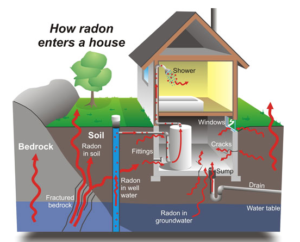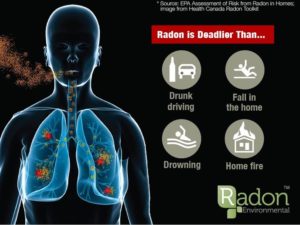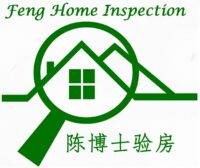
Update:
For all purchase agreements signed on or after February 1, 2021, there is up to $50,000 coverage for warranted damage caused environmentally harmful substances or hazards from Tarion. This coverage includes mitigation of excessive levels of radon. The warranty covers remediation of radon gas in excess of 200 Becquerels per cubic metre and coverage lasts for up to seven years.
For details:https://www.tarion.com/homeowners/your-warranty-coverage/radon-and-your-warranty
Radon exposure is linked to approximately 16% of lung cancer deaths in Canada. It is the second leading cause of lung cancer for smokers and the leading cause of lung cancer for non-smokers. Health Canada estimated that 3,200 Canadians die of radon-induced lung cancer every year. Approximately 7% of homes have high levels of radon.
Radon is a known human carcinogen!
What is Radon?
Radon is an Invisible, Odourless, Tasteless and Radioactive gas. It is naturally occurred when the uranium in soil and rock breaks down.
When radon is released from the ground into the outdoor air, it is diluted and is not a concern. However, in enclosed spaces like homes, it can sometimes accumulate to high levels, which can be a risk to the health of you and your family. Radon can enter a home any place it finds an opening where the house contacts the soil: cracks in foundation walls and in floor slabs, construction joints, gaps around service pipes, support posts, window casements, floor drains, sumps or cavities inside walls. Radon can also be found in groundwater from private or small community wells. Radon levels in a home change significantly over time. However, the Radon levels in home will be much higher in winter due to the closed windows/doors and pressure difference induced by indoor-outdoor temperature difference.

What Are the Health Effects of Radon?
The primary risk of lung cancer from exposure to radon does not come from exposure to the gas itself, but from exposure to its decay products called “radon progeny”. Two progeny, polonium-218 and polonium-214 decay rapidly with emitting high energetic alpha particles which can penetrate vulnerable lung tissues if people breathe in radon or its progeny, which can then lead to lung cancer. Health Canada estimates a non-smoker exposed to elevated levels of radon over a lifetime has a 1 in 20 chance of developing lung cancer. If a smoker is exposed to the same level of radon over a lifetime, the risk increases to a 1 in 3 chance.

Fact-Checking:
-
Radon exposure is linked to approximately 16% of lung cancer deaths in Canada.
- Radon is the second leading cause of lung cancer after smoking and the leading cause of lung cancer for nonsmokers;
- For a lifelong smoker, the risk of getting lung cancer is 1 in 10. If he adds long‑term exposure to a high level of radon, the risk becomes 1 in 3. On the other hand, for a non-smoker, the lung cancer risk at the same high radon level is 1 in 20;
- Health Canada estimated that 3,200 Canadians die of radon-induced lung cancer every year.
What is Canadian Guideline for Exposure to Radon in Indoor Air?
The current Canadian guideline for radon in indoor air for dwellings is 200 Becquerels per cubic metre (200 Bq/m3). If the radon level is above the Canadian guideline of 200 Bq/m3 , Health Canada recommends that you take action to lower the level. The higher the radon concentrations, the sooner action should be taken to reduce levels to as low as practically possible. While the health risk from radon exposure below the Canadian Guideline is small there is no level that is considered risk free. It is the choice of each homeowner to decide what level of radon exposure they are willing to accept. Approximately 7% of homes have high levels of radon above 200 Bq/m3.
Does My Home Have Problem with Radon?
Radon levels vary significantly across the country.There are no areas of the country that are ‘radon free,’ but there are areas of the country where high levels of indoor radon are more prevalent. Therefore, radon is found in almost every home, but concentration levels will vary from one house to another, even if they are similar and next door to each other. It is expected that only a small percentage of homes will have radon levels above the guideline but the ONLY way to be sure of the radon level in your home is to TEST.
Measuring the Radon Level in Your Home
Radon test can be classified into short-term measurements of 2-90 days and long-term measurements lasting more than 90 days. As Radon levels in a home change significantly over time and the highest radon levels are usually observed during winter months, a long-term measurement period will give a much better indication of the annual average radon concentration than measurements of shorter duration. However, short-term measurements (typically 2-7 days) can give a rapid indication of the radon concentration in the home for concerned homeowners.
How Much Cost to Test Radon in My Home?
The cost for radon testing will be from ~$100 to ~$300. Contact us for detailed quote.
